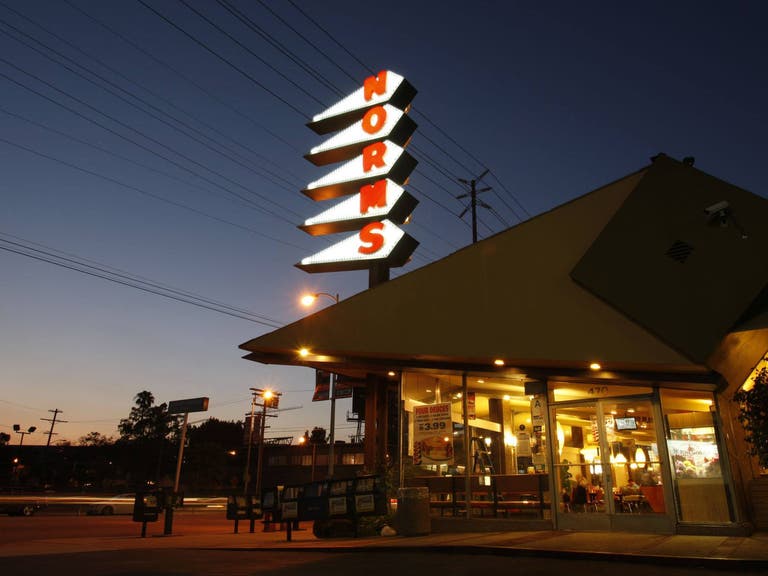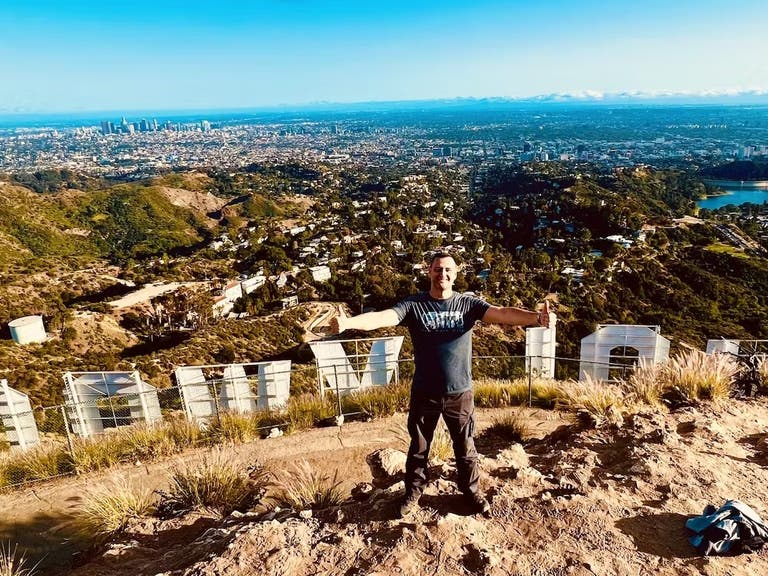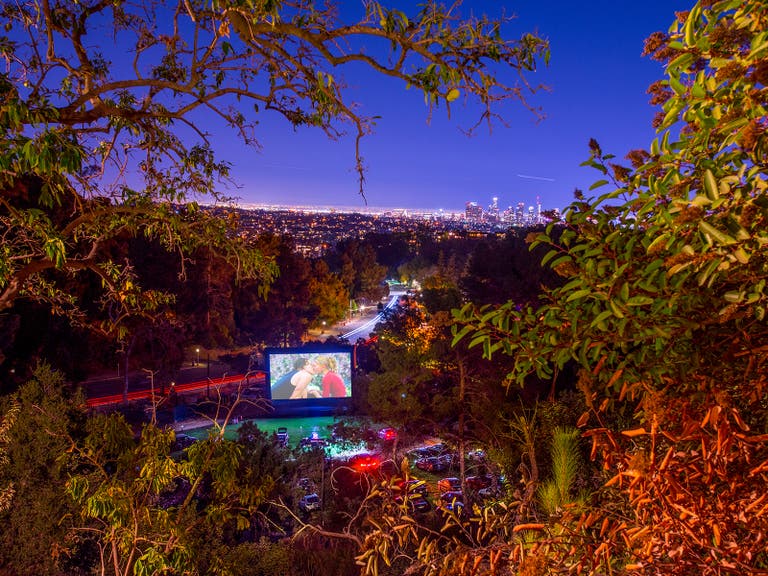The Guide to Ed Ruscha's Los Angeles
Ten locations inspired by "ED RUSCHA / NOW THEN"

Now on view at LACMA through October 6, ED RUSCHA / NOW THEN is as much a peek into Los Angeles as it is an overview of the artist’s decades-long career. Ruscha moved to LA in 1956 and studied at Chouinard, the school that became California Institute of the Arts. With a style influenced by both graphic design and architecture and a process that includes photography as well as painting, Ruscha’s work has been both directly and indirectly influenced by his adopted hometown.
Walk through the exhibition and you might see some familiar sites, like Dodger Stadium or the Hollywood Sign. You’ll also glimpse street scenes and buildings that feel familiar, yet aren’t recognizable. Many of the locations included in the show have been drastically altered since Ruscha captured them on film, while other places haven’t changed much at all. Read on for ten LA locations that appear in ED RUSCHA / NOW THEN.

LACMA
While LACMA is currently undergoing renovations, you can get an idea of how the museum looked at the time of its 1965 opening in Los Angeles County Museum of Art on Fire. The building didn’t catch on fire in real life. In the NOW THEN exhibition card, the smoke billowing from the building is said to be a subconscious reference to the Watts Uprising, which was not far from the artist’s studio.

NORMS La Cienega
NORMS La Cienega (470 N. La Cienega Blvd, West Hollywood 90048) is an LA landmark for a few reasons. Opened in 1957, the longest-operating location in the 24-hour chain is a fantastic example of Googie architecture in Los Angeles. In fact, that’s why it was designated a Historic-Cultural Monument in 2015. It’s also the subject of Ruscha’s famed painting, Norms, La Cienega, on Fire (1964).


Park La Brea
In his 1965 book, Some Los Angeles Apartments, Ruscha captures the city’s architecture of the mid-20th century. Amongst the residential buildings depicted is Park La Brea, located less than a mile from LACMA. One of the largest apartment complexes in the U.S., Park La Brea features more than 4,200 units spanning eighteen 13-story towers and 31 two-story buildings. The specific tower featured in Ruscha's photograph is at 360 S. Burnside Ave.


"The Back of Hollywood"
Ruscha’s depiction of the Hollywood Sign in reverse began as a billboard commission in 1976 and then found its way to the center of his 1977 painting, The Back of Hollywood. If you want to catch a similar - albeit not identical - view of the Hollywood Sign, your best chance to do so is by hiking the Cahuenga Peak Trail.

"Thirtyfour Parking Lots in Los Angeles"
Dodger Stadium
Ruscha published his collection of aerial photographs Thirtyfour Parking Lots in Los Angeles in 1967, and most of the locations in the book have changed dramatically since then. However, Dodger Stadium remains a familiar site where it’s still recognizable from the photograph, even if the neighborhoods surrounding the stadium, and visible in the photograph, look different today. Go behind the scenes of the landmark ballpark with a 75-minute Dodger Stadium Tour. The guided tours start every hour on the hour beginning at 10am, with the last tour starting at 1pm on game days and 3pm on non-game days.
Hollywood Bowl
Unlike many of the parking lot aerial photos that Ruscha took in the late 1960s, the Hollywood Bowl parking lot off Highland Avenue is recognizable today. You can see the surrounding Hollywood Hills, as well as Highland in front of the lot. During the season, the public is invited to free classical rehearsals, typically on Tuesdays and Thursdays. If you’re at the Bowl for a concert, you’re more likely to see the lot packed with cars, as parking spots tend to go fast.

"A Few Palm Trees"
On display at NOW THEN is a contact sheet for a 1971 photograph titled, A Few Palm Trees. A note at the bottom of the sheet reads “Island at Hollywood & La Brea.” Since the 1990s, the island has been the home of the Four Ladies of Hollywood sculpture that depicts Anna May Wong, Dolores del Río, Dorothy Dandridge and Mae West; but there are still palm trees to be seen.
Sunset Strip
In 1966, Ed Ruscha released Every Building on the Sunset Strip, an accordion-style book that documented one of the decade’s cultural focal points. Tour the Sunset Strip— the portion of Sunset Boulevard that stretches between Crescent Heights and Doheny— on your own, or you can take a digital drive with the 12 Sunsets project.
On Saturday, June 15, LACMA is co-presenting a two-hour Sunset Boulevard Bus Tour with the Getty Research Institute. Tickets are $25, or $20 for Members.

"Texaco"
In 1963, Ruscha published his first artist’s book, Twentysix Gasoline Stations, which documented spots located between Los Angeles and Oklahoma City. It’s actually a gas station in Amarillo, Texas that inspired his famous painting seen in the LACMA exhibition: Standard Station, Ten Cent Western Being Torn in Half. There are a handful of LA gas stations that are part of this body of work. A photo of a Texaco station on Sunset, right by the intersection at Horn Avenue, is included in NOW THEN. Check out the area on your Sunset Strip tour and notice how much it has changed since the 1960s.


"Santa Monica, Melrose, Beverly, La Brea, Fairfax"
In Santa Monica, Melrose, Beverly, La Brea, Fairfax, Ruscha paints a grid-like aerial view depicting the major thoroughfares that mark the meeting point of the neighborhoods of Hollywood, Hancock Park and Fairfax. The small dots of black paint represent the bustle of activity in this section of Los Angeles, which remains unchanged, even if many of the individual businesses have come and gone since it was painted in 1998. Some businesses that are still around include Canter’s Deli and Genghis Cohen on Fairfax; Jet Rag on La Brea and Melrose Trading Post at Fairfax High School.



